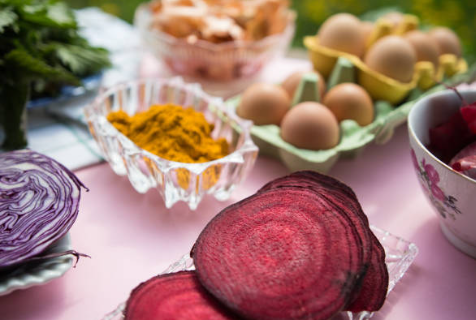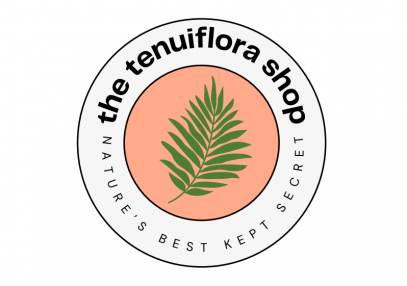Natural dyeing in North America is not just a craft revival—it’s a rediscovery of cultural roots, a commitment to sustainability, and a growing movement among artists, educators, and textile producers. From coast to coast, this continent holds a rich spectrum of dye sources used historically by Indigenous communities and embraced today by environmentally conscious artisans.
This guide provides over 10,000 words of insight into local dye plants, fungi, lichens, and insect-based dyes found throughout North America. You’ll explore regional species, their dye properties, traditional and modern uses, cultivation tips, and sustainable harvesting practices. This is the definitive resource for anyone passionate about natural color and its connection to the land.
Table of Contents
- Introduction to Natural Dyeing in North America
- Historical and Indigenous Dye Practices
- Regional Dye Sources
- Northeast
- Southeast
- Great Plains
- Southwest
- Pacific Northwest
- Rocky Mountains
- Northern Canada and Alaska
- Trees as Natural Dye Sources
- Fungi and Lichens
- Insects and Animal-Based Dyes
- Mordants and Modifiers Found in North America
- Dye Gardens: What to Grow and Where
- Sustainable Harvesting and Foraging Ethics
- Modern Dyers and Dye Projects in North America
- Further Reading and Resources
1. Introduction to Natural Dyeing in North America
Before synthetic dyes flooded the textile industry in the 19th century, all dyes were derived from nature—plants, minerals, fungi, and insects. Across North America, Indigenous peoples and settlers used dye materials to color fiber, leather, basketry, and even their bodies. Every color came from the surrounding landscape. Color was not only functional but sacred.
In recent decades, interest in natural dyes has seen a strong resurgence. Artisans, small brands, educators, and community-based makers have rekindled a love for slow, sustainable color. Natural dyeing today is not only a creative process but a form of activism, ecology, and storytelling.
2. Historical and Indigenous Dye Practices
Each region in North America has its own history of dye traditions, shaped by the plants that grow there and the people who’ve lived on and with the land for generations.
2.1 Navajo and Pueblo Dyers
In the Southwest, the Navajo and Pueblo peoples developed sophisticated dye techniques using:
- Rabbitbrush for yellow
- Cochineal (insect dye imported and cultivated via trade)
- Juniper ash as an alkaline mordant
These colors adorned woven blankets and ceremonial garments.
2.2 Haudenosaunee (Iroquois Confederacy)
In the Northeast:
- Sumac and black walnut produced browns and blacks
- Goldenrod gave yellow
- Birch bark gave soft tan and red hues
These were used in dyeing quillwork and textiles.
2.3 Southeastern Tribes
The Choctaw, Creek, and Cherokee used:
- Bloodroot for red
- Pokeweed for purple (though fugitive)
- Black walnut hulls for brown
2.4 Inuit and Dene People
In the Arctic and subarctic regions:
- Lichens and mineral-based pigments were used more than plants due to climate limitations.
Dyes were applied to skin, tools, and ceremonial items.
It’s crucial to approach these traditions with respect. Collaborate, cite sources, and avoid cultural appropriation when working with these dye practices.
3. Regional Dye Sources
3.1 Northeast (New England, Eastern Canada)
- Goldenrod (Solidago spp.): brilliant yellow
- Sumac (Rhus spp.): high in tannins
- Black Walnut (Juglans nigra): deep brown
- Red Maple (Acer rubrum): gray-pinks from bark
- Staghorn sumac berries: pinks and acidic modifiers
- Birch bark: light pinks and greys
3.2 Southeast (Carolinas, Georgia, Florida)
- Osage Orange (Maclura pomifera): yellow-orange
- Elderberry (Sambucus spp.): purple (on wool)
- Pokeweed: fuchsia-purples (fugitive but beautiful)
- Black cherry bark: warm cinnamon hues
- Persimmon: astringent dye with tannin richness
3.3 Great Plains
- Sunflower hulls: grey, silver, and black tones
- Prairie dock: greens and golds
- Wild grapevines: bark and roots yield brown-purple
- Coneflowers: earthy tones depending on species
3.4 Southwest
- Cochineal (from cacti): hot pink to red
- Apache plume: golden creams
- Chilopsis linearis (desert willow): bark gives dusky purples
- Yucca leaves: soap/dye blend in certain cultures
3.5 Pacific Northwest
- Oregon Grape: brilliant yellow from roots
- Lichen (ethically harvested): purples and pinks
- Alder bark: burnt orange and russet
- Redcedar bark: soft greys and reddish browns
3.6 Rocky Mountains
- Lupines: purples and blues
- Aspen bark: delicate yellows
- Chokecherry: deep reddish-purples
3.7 Northern Canada and Alaska
- Cloudberry leaves: earthy greens
- Arctic willow bark: pinkish hues
- Sphagnum moss: dull green tints
Each of these regional profiles can be expanded into individual guides. Keeping a dye journal helps track seasonality and color outcomes.
4. Trees as Natural Dye Sources
Trees provide dye in the form of bark, leaves, galls, nuts, and sap.
Notable Tree Dyes:
- Black Walnut: husks for deep browns
- Red Oak: bark for reddish tones
- Sumac and Oak Galls: tannin-rich for mordanting
- Eastern Hemlock: reddish-brown from bark
- Maple: bark for soft beige and greys
5. Fungi and Lichen Dyes
Some of the most vibrant natural dyes come from unexpected sources like fungi and lichens.
Common Dye Lichens:
- Xanthoria spp.: orange
- Ochrolechia spp.: red to purple
- Lobaria spp.: violet tones
Mushroom Dyes:
- Cortinarius spp.: gold, red, purple
- Hydnellum spp.: blue-gray
- Phaeolus schweinitzii: green, brown, yellow
Mushroom and lichen dyes require ethical foraging — many species are endangered and grow slowly.
6. Insects and Animal-Based Dyes
Cochineal (Dactylopius coccus)
Native to Mexico and the American Southwest. This scale insect feeds on prickly pear cactus and produces vibrant scarlet and magenta.
Traditional Use: Widespread among Aztec and later Spanish dyers. Still cultivated in Oaxaca today.
7. Mordants and Modifiers
Natural dye success depends heavily on mordants:
Found in North America:
- Sumac leaves and bark: natural tannins
- Oak galls: classic tannin source
- Iron from rusty nails or soil: shifts color to greys, purples
- Wood ash: raises pH
- Clay and mineral-rich water: changes tone subtly
Use alum, iron, and tannin in various combinations to expand your palette.
8. North American Dye Gardens
Want to grow your own color? Here are easy-to-grow dye plants:
- Weld (Reseda luteola): yellow
- Madder (Rubia tinctorum): red
- Japanese Indigo (Persicaria tinctoria): blue
- Coreopsis (tinctoria and lanceolata): orange/yellow
- Hopi Sunflower: purple/grey from seed hulls
- Marigolds: gold-orange
Look for organic dye seed sources like:
- Rowan Tree Dye Garden (USA)
- Owl Eyes Botanicals (Canada)
- Wild Pigment Project
9. Sustainable Harvesting and Ethical Foraging
As more people join the natural dye movement, it’s essential to:
- Avoid endangered species. Know before you harvest.
- Leave more than you take. Rule of thirds (1/3 for you, 2/3 for nature).
- Harvest in season. Never strip bark or damage roots unless cultivated.
- Know your land. Get permission if it’s not yours.
Partner with foraging experts, land stewards, or tribal knowledge keepers whenever possible.
10. Modern Dyers, Studios, and Projects
Across North America, artists and educators are preserving and evolving the practice of natural dyeing:
- Aboubakar Fofana (Mali + USA): master indigo dyer.
- WildCraft Studio School (OR): dye education with regional focus.
- Maiwa (BC): leading supplier + educator.
- Fibershed (CA): regenerative textile ecosystem.
Documentaries, YouTube tutorials, and online classes make it easier than ever to learn. But local, hands-on practice remains the best teacher.
11. Final Thoughts
North America is a landscape of color. Whether you’re in a dense forest, desert plain, prairie, or coastal wetland, there’s a dye waiting to be discovered. Building a relationship with place through pigment is a powerful way to create sustainably, tell stories, and keep ancestral knowledge alive.
Start where you are. Learn the names of the plants. Honor the cultures who came before. And dye with care.

Tagged: North American natural dyes, native dye plants, botanical dyeing, foraging for color, indigenous dye traditions, sustainable textile arts
